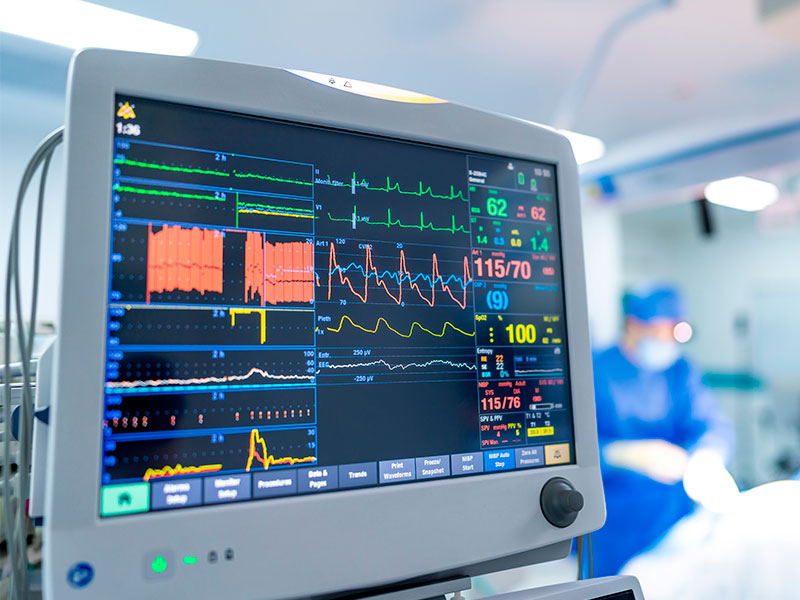Overview
Anesthesia is a medical treatment used to prevent pain and discomfort during surgeries or medical procedures. It involves the use of medications to block sensation, control pain, or induce unconsciousness, depending on the type and complexity of the procedure.
Anesthesia allows patients to undergo necessary surgical treatments without experiencing pain, and it is carefully managed to ensure safety. While modern anesthesia is generally very safe, it requires skilled monitoring and precise dosage to minimize potential risks and ensure a smooth recovery.
What is Anesthesia?
Anesthesia is a medical treatment used to prevent pain during surgery and some other procedures. It temporarily blocks the sensations of pain, allowing patients to undergo procedures without discomfort, reducing the risk of shock, and reducing psychological side effects. There are three main types of anesthesia: general, regional, and local. Each type is used depending on the procedure and the patient’s needs.
Anesthesia is generally safe when administered by trained professionals, but there are risks, especially for people with pre-existing medical conditions. Proper planning and monitoring during anesthesia can help minimize these risks and ensure a smooth recovery.

Types
Anesthesia can be broken down into different categories based on the level of sedation and the area of the body affected. The main types of anesthesia include:
General Anesthesia
General anesthesia causes the patient to be completely unconscious and unaware during the procedure. It is typically used for major surgeries or procedures that would be too painful to endure while awake. This type of anesthesia is usually administered through inhaled gases or intravenous (IV) medication.
Regional Anesthesia
Regional anesthesia numbs a larger part of the body but does not affect consciousness. It is commonly used for limbs, abdomen, or pelvis surgeries. An example is spinal anesthesia (epidural anesthesia), where the numbing medication is injected into the spinal fluid and is often used during childbirth.
Local Anesthesia
Local anesthesia numbs a small, specific area of the body and is typically used for minor procedures like dental work or skin biopsies. Because the anesthesia only affects the targeted area, the patient remains awake and alert during the procedure.
How Does Anesthesia Work?
Anesthesia works by interfering with nerve signals, preventing the brain from receiving pain signals from the body. Depending on the type of anesthesia, it can either block sensations locally(in a small area) or induce unconsciousness in the case of general anesthesia.
For general anesthesia, the medications used typically include anesthetic gases or intravenous drugs that alter brain function, making the patient unconscious. For regional or local anesthesia, the medications block nerve transmission at the site of the procedure, numbing the targeted area but leaving the patient awake and alert.
Risks of Anesthesia
Although anesthesia is generally safe, there are some risks involved. These risks can vary depending on the type of anesthesia, the patient’s medical history, and the complexity of the procedure being performed. We’ll examine the most common ones below.
General Anesthesia Risks
- Allergic reactions: Some individuals may have allergic reactions to anesthetic drugs, although this is rare.
- Breathing problems: General anesthesia can affect breathing, especially in individuals with lung or heart conditions.
- Nausea and vomiting: These are common side effects after general anesthesia, but they are typically manageable.
- Postoperative confusion: Some patients, especially older adults, may experience confusion or memory problems after waking up from general anesthesia.
Regional and Local Anesthesia Risks
- Nerve damage: In rare cases, regional anesthesia can lead to temporary or permanent nerve damage.
- Infection or bleeding: There is always a slight risk of infection or bleeding at the injection site.
- Allergic reactions: Just like with general anesthesia, there may be an allergic reaction to the drugs used in regional or local anesthesia.
How Is Anesthesia Administered?
Anesthesia is typically administered by an anesthesiologist or nurse anesthetist specializing in anesthesia care. The method of administration depends on the type of anesthesia being used.
General Anesthesia
General anesthesia is typically administered intravenously (IV) or via inhalation. For IV anesthesia, a needle is inserted into a vein, and medications are slowly infused to induce unconsciousness. Inhaled anesthesia is delivered through a mask or breathing tube. Once the medications take effect, the patient is deeply unconscious and unaware of the procedure.
Regional Anesthesia
Regional anesthesia is typically administered through injections near the spinal cord, such as spinal or epidural anesthesia. For certain procedures, regional anesthesia may also be injected into a nerve or group of nerves to numb the area being operated on (nerve block).
Local Anesthesia
Local anesthesia is administered directly to the treatment area. It may be given as an injection or, in some cases, as a topical ointment or spray that numbs the skin. Local anesthesia is generally very safe and well-tolerated for minor procedures.
Preparing for Anesthesia
Preparing for anesthesia is a critical step in the process. Before undergoing anesthesia, patients are typically required to provide a detailed medical history, including any allergies, existing medical conditions, and medications they are taking. The preparation step helps the anesthesiologist determine the safest anesthesia plan for the individual.
Preoperative Instructions
- Fasting: Patients are usually asked to refrain from eating or drinking for several hours before the procedure to reduce the risk of aspiration (inhaling food or liquid into the lungs).
- Medications: Some medications, especially anticoagulants or medications for chronic conditions, may need to be stopped or adjusted before the procedure.
- Health Evaluation: A physical exam, blood tests, or imaging may be ordered to evaluate the patient’s overall health and suitability for anesthesia.
Monitoring During Anesthesia
The patient’s vital signs, including heart rate, blood pressure, oxygen levels, and respiratory rate, are closely monitored throughout the procedure. Anesthesia specialists continuously adjust the medication levels to ensure the patient remains safe and appropriately sedated throughout the process.

Recovering from Anesthesia
After the procedure, patients are moved to a recovery area, where they are monitored as they wake up from anesthesia. Recovery times vary based on the type of anesthesia used.
- General Anesthesia Recovery: For general anesthesia, patients typically experience grogginess or confusion upon waking up. They may feel nauseous or have a sore throat if a breathing tube is used. Most side effects are temporary and subside within a few hours.
- Regional and Local Anesthesia Recovery: Recovery times for regional or local anesthesia are generally shorter. The numbing effects wear off within a few hours, and patients may feel discomfort or weakness in the affected area as the anesthesia wears off.
Risks and Complications
While anesthesia is generally considered safe, it does carry some risks. Common risks include allergic reactions to the anesthetic drugs, breathing difficulties, and low blood pressure. In rare cases, more serious complications may arise, such as nerve damage, organ toxicity, or reactions to the medications used.
Some patients, particularly those with underlying health conditions, can also experience complications like blood clots or infections. Though uncommon, long-term complications can involve persistent pain or numbness from nerve damage. However, the use of modern monitoring equipment and the expertise of anesthesia professionals has significantly minimized these risks, ensuring that procedures are as safe as possible.
Careful patient evaluation before anesthesia and during recovery is crucial in reducing the likelihood of complications.
Outlook for People Undergoing Anesthesia
Most people recover from anesthesia with no major complications, and anesthesia allows many medical procedures to be performed with minimal discomfort. However, the risk of complications can vary depending on the procedure, the patient’s health, and the type of anesthesia used.
With proper planning, preparation, and care, anesthesia is a safe and effective way to manage pain and discomfort during medical procedures. If you have concerns about anesthesia, consult with your healthcare provider to ensure that it is used safely and effectively for your needs.
Access Affordable Medication for Anesthesia
Anesthesia is essential for ensuring comfort and safety during surgeries and medical procedures. Depending on the procedure and the level of sedation required, various medications are used to induce anesthesia. Below is a list of commonly used anesthetic medications and links to exclusive coupon pages to help reduce treatment costs. Always consult your healthcare provider to determine the appropriate medication for your specific needs.
